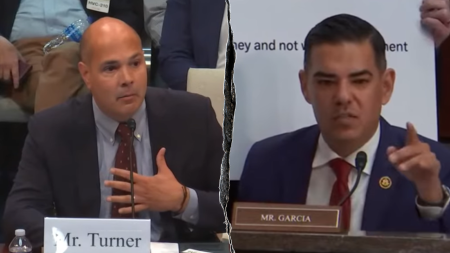The gruesome murder of a woman burned alive on a New York City subway has sparked outrage and calls for swift justice, particularly from Republican members of Congress. Rep. Marjorie Taylor Greene, known for her outspoken pronouncements, has vehemently demanded the immediate trial, conviction, and execution of the accused, Sebastian Zapeta, a 33-year-old Guatemalan national. Greene expressed her horror at the crime on social media, stating that the act was so evil she could no longer bear to watch the video of the incident. She also questioned the apparent lack of intervention by bystanders, expressing disbelief that no one seemed to attempt to save the victim. While acknowledging that some may have tried, the available footage, in her view, did not reflect any such efforts. Greene’s demand for the death penalty reflects her belief that a lengthy trial would be a waste of resources in this seemingly clear-cut case.
Echoing Greene’s sentiment, Rep. Anna Paulina Luna also called for capital punishment for Zapeta. Rep. Andy Biggs attributed the crime to what he characterized as Democrats’ “soft-on-crime policies,” suggesting a link between lenient criminal justice approaches and the occurrence of such violent acts. These pronouncements highlight a broader political debate regarding criminal justice reform and its perceived impact on public safety. The case has also ignited discussions about sanctuary city policies and immigration enforcement, given Zapeta’s status as a previously deported individual who re-entered the country illegally.
According to details released by law enforcement, Zapeta allegedly used a lighter to ignite the victim’s clothing, which rapidly became engulfed in flames. Assistant District Attorney Ari Rottenberg added that Zapeta further exacerbated the situation by fanning the flames with a shirt, a detail that underscores the deliberate and malicious nature of the alleged attack. This information paints a disturbing picture of the incident and strengthens the prosecution’s case against the accused. The swiftness and intensity of the fire, as described by NYPD Commissioner Jessica Tisch, suggest the victim had little chance of escape and underscores the horrific nature of the crime.
The case raises several critical questions, extending beyond the immediate call for justice. The apparent inaction of bystanders, as noted by Rep. Greene, prompts reflection on the “bystander effect” and the complex psychological factors that can inhibit intervention in emergencies. The incident also reignites the debate surrounding immigration policy, particularly concerning the re-entry of individuals previously deported for violating U.S. law. Zapeta’s history of deportation brings to light the challenges faced by immigration enforcement agencies in preventing illegal re-entry and raises concerns about the potential risks posed by individuals with prior criminal records.
This tragic incident also underscores the escalating concerns about violence in major cities and the anxieties surrounding public safety, particularly in public transportation systems. The subway, often perceived as a vulnerable space, becomes a focal point for these anxieties. The shocking nature of this crime, occurring in such a public and typically mundane setting, amplifies the sense of fear and insecurity among city residents. The case serves as a stark reminder of the challenges faced by law enforcement and policymakers in addressing both violent crime and the underlying social issues that may contribute to such acts.
The upcoming legal proceedings against Zapeta will undoubtedly be closely scrutinized. The evidence presented, including witness testimonies and video footage, will play a crucial role in determining his guilt or innocence. The case is likely to spark further debate about the appropriateness of the death penalty, the effectiveness of current immigration policies, and the broader issues surrounding public safety and criminal justice reform. The tragic loss of life and the horrific nature of the crime demand a thorough investigation and a just resolution within the confines of the law. The public will be watching closely as the legal process unfolds, seeking both accountability and a sense of closure in the aftermath of this devastating event.










